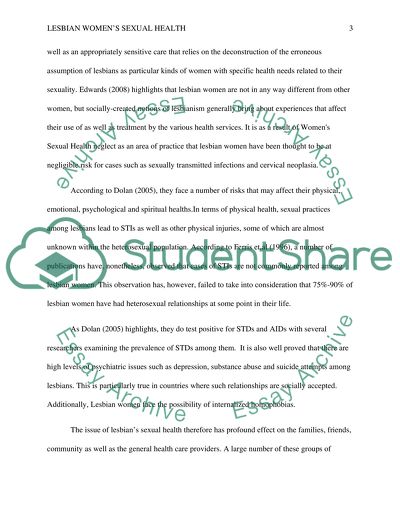Cite this document
(“Lesbian Women's Sexual Health Research Paper Example | Topics and Well Written Essays - 2750 words”, n.d.)
Retrieved from https://studentshare.org/health-sciences-medicine/1395208-lesbian-womens-sexual-health
Retrieved from https://studentshare.org/health-sciences-medicine/1395208-lesbian-womens-sexual-health
(Lesbian Women'S Sexual Health Research Paper Example | Topics and Well Written Essays - 2750 Words)
https://studentshare.org/health-sciences-medicine/1395208-lesbian-womens-sexual-health.
https://studentshare.org/health-sciences-medicine/1395208-lesbian-womens-sexual-health.
“Lesbian Women'S Sexual Health Research Paper Example | Topics and Well Written Essays - 2750 Words”, n.d. https://studentshare.org/health-sciences-medicine/1395208-lesbian-womens-sexual-health.


